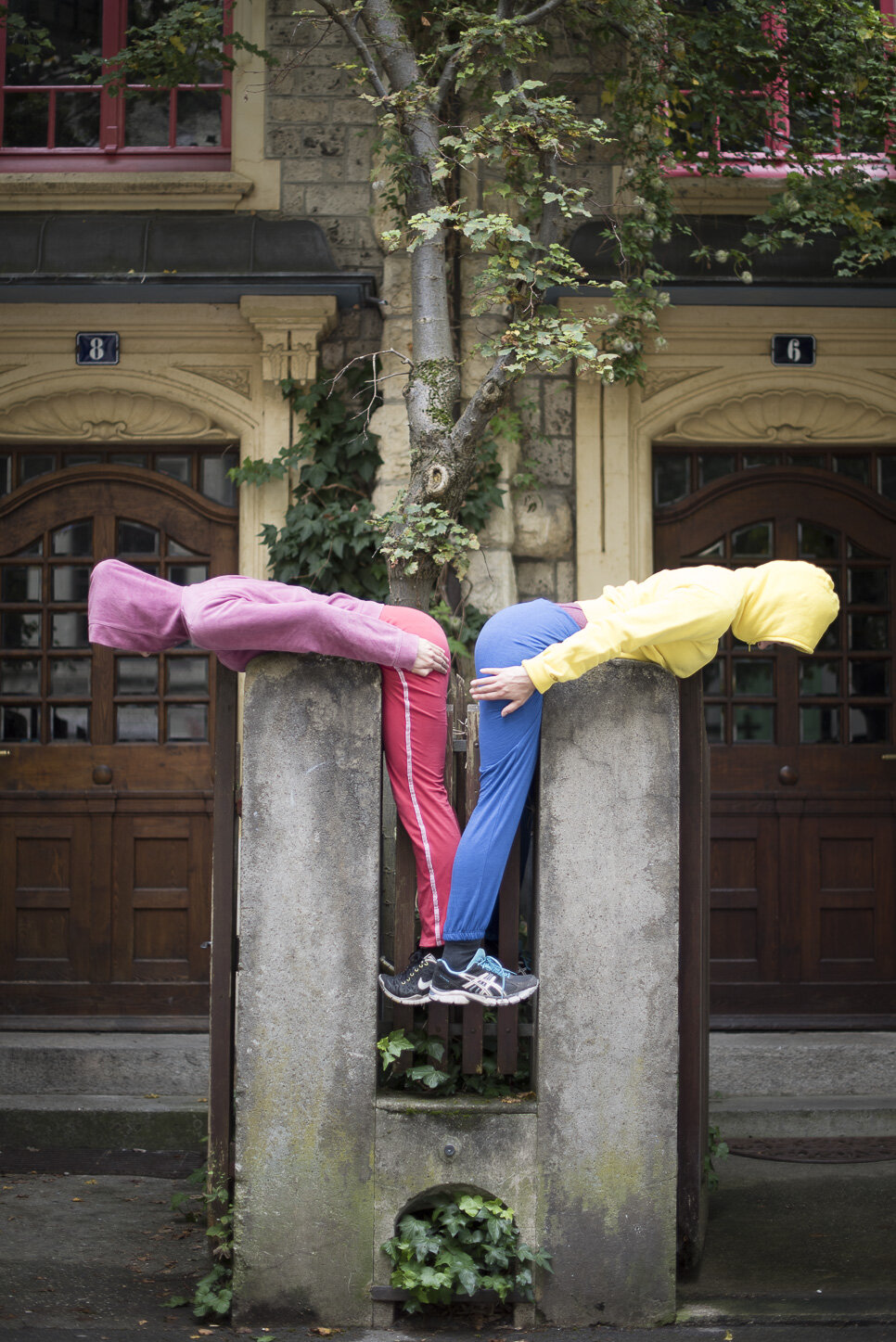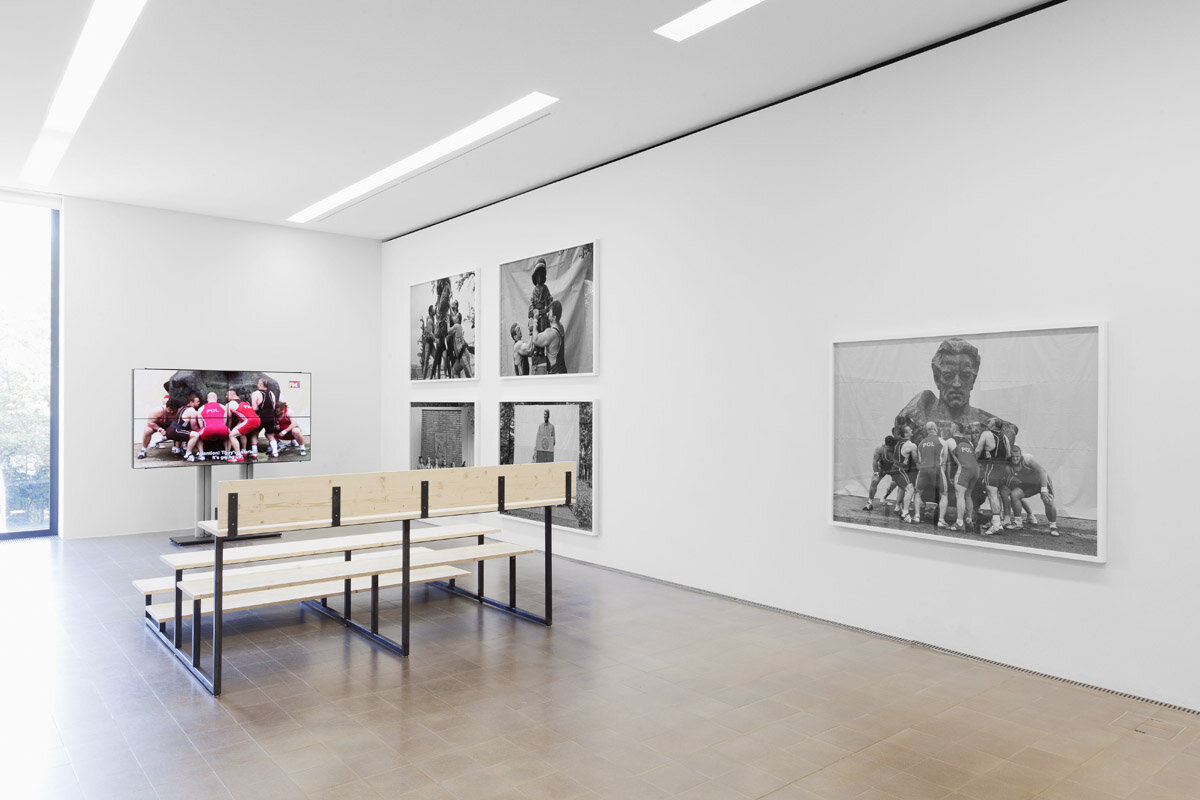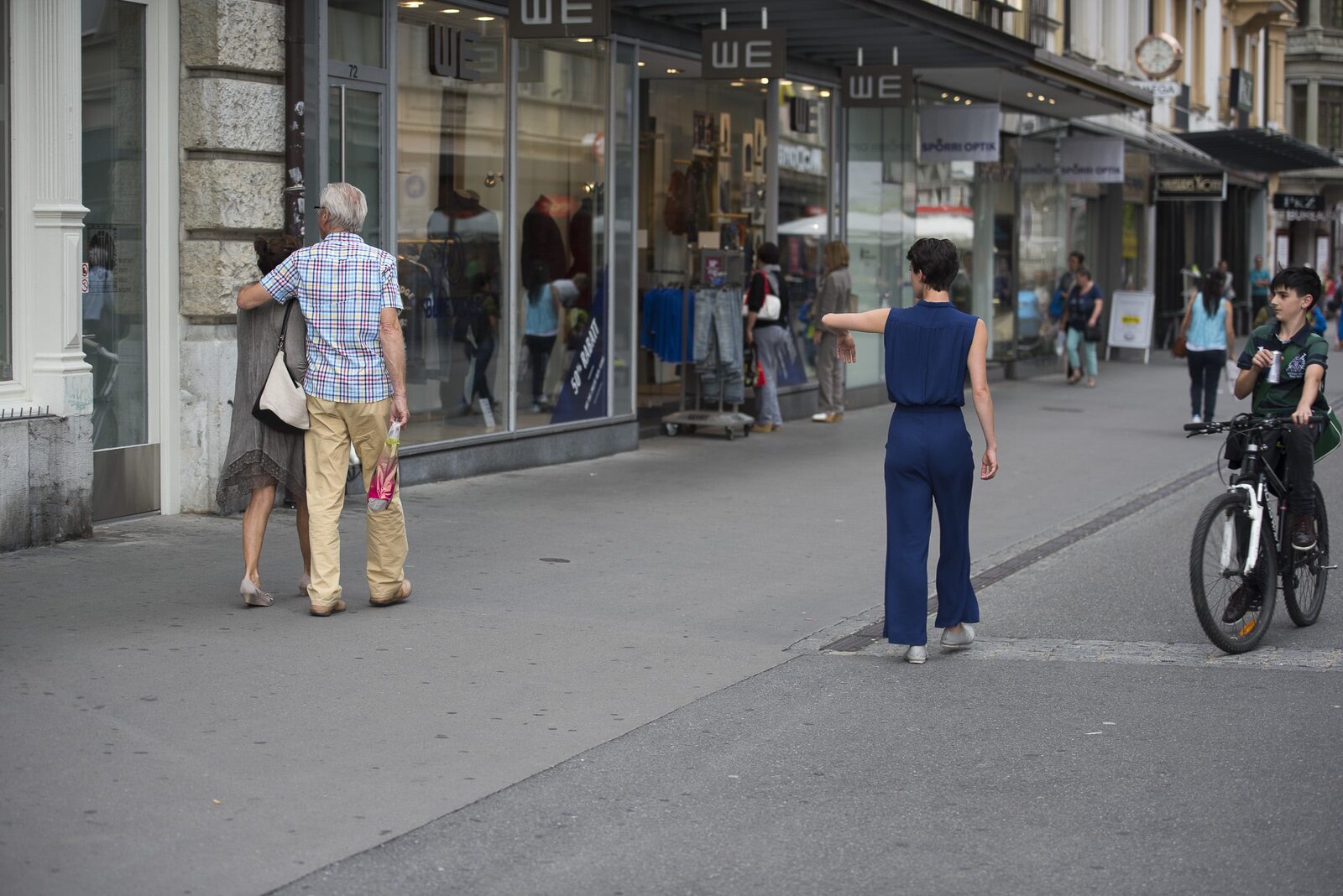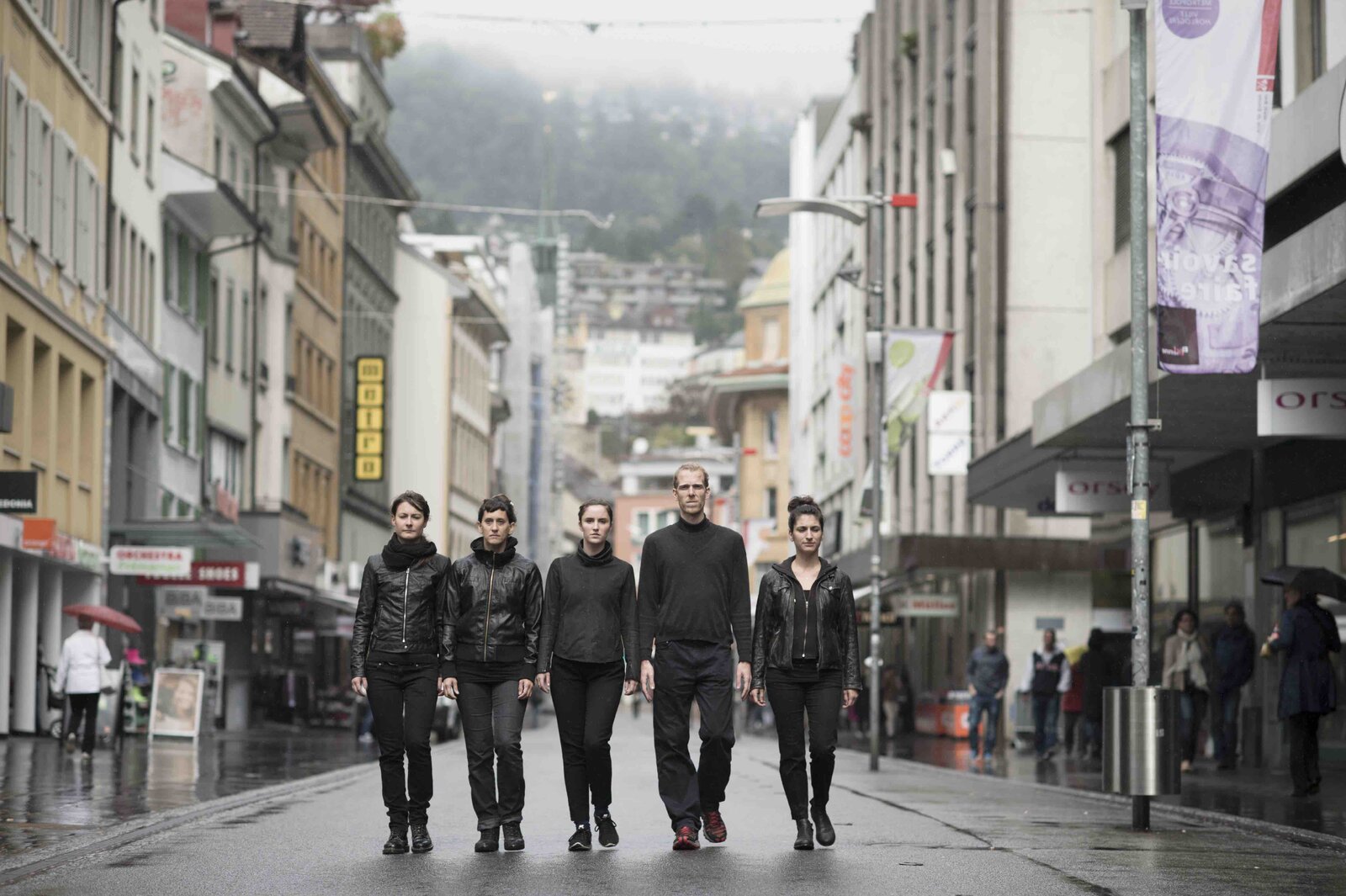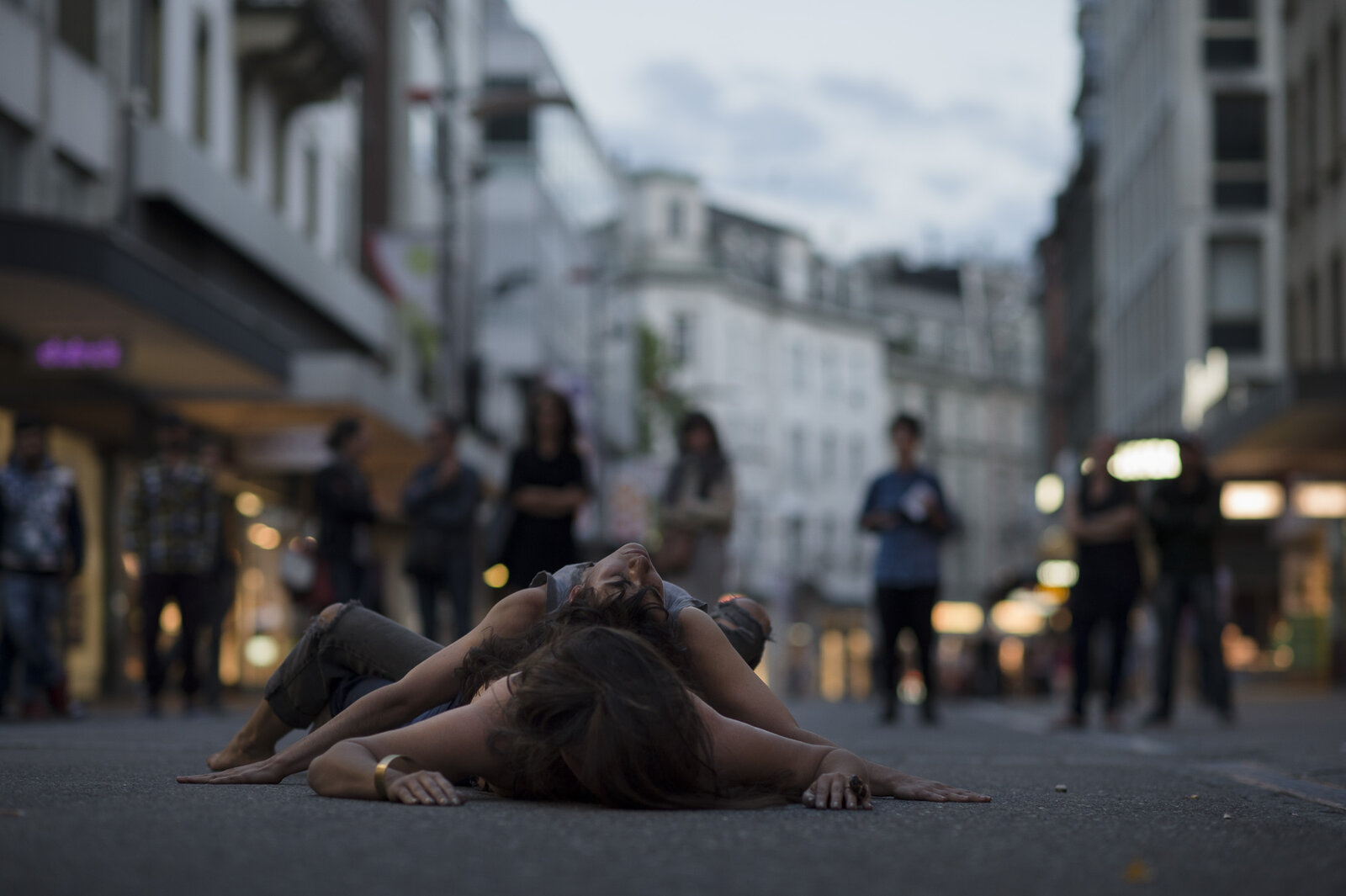Le Mouvement
Performing the City
August 26 to August 31 2014
Artistic Performances in the City of Biel/Bienne
Opening ceremony on August 26 2014 6 p.m.
Performing the City proposed an open-air exhibition that replaced sculpture by live performers acting directly in and testing the boundaries of urban space. The inhabitants of Biel/Bienne and all visitors had the rare opportunity to witness orchestrated encounters with artists and dancers performing in the streets and squares of Biel throughout the whole duration of the show.
The exhibition intended to investigate the sculptural quality or materiality of the body, how that body negotiates public urban space, and finally questioned the permanence of and expectations associated with public sculpture. Simultaneously endangered by the ubiquity of the screen and images, which continually threaten to flatten the body into two dimensions, while nevertheless functioning as the site of production in a post-Fordist paradigm, the body has become more important and fraught as living palpable thing than ever. Such issues can partially account for contemporary art’s growing preoccupation with dance, an art form that will play a large role in this exhibition’s conceptual and literal structure.
In his brilliant study of the politics of choreography since the 18th century, Social Choreography. Ideology as Performance in Dance and Everyday Movement, Andrew Hewitt goes as far as to suggest that the connection between the logic of dance and the structures that shape modern society is not merely metaphoric, but in fact intrinsic. He argues that dance is the “space in which social possibilities are both rehearsed and performed” and that the choreographies of certain dance styles therefore constitute a “structuring blueprint for thinking and effecting modern social organization”.
In consonance with such questions, the public aspect of this exhibition was entirely ephemeral, critically opposing the monumentality of public sculptural interventions with the fleeting presentation of performances, which foreground the materiality of the body and its vulnerability. Eschewing the construction of stages, the performances have taken place directly in public spaces themselves. As such, the exhibition explored the viability of public space, to what extent it can accommodate such activities, or whether or not it could be said to even exist.


















